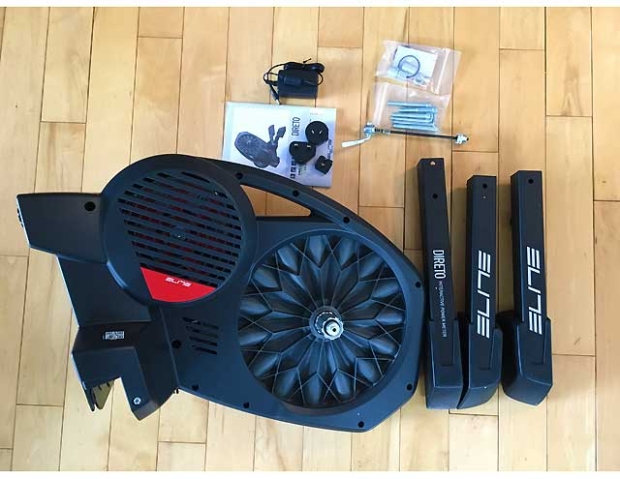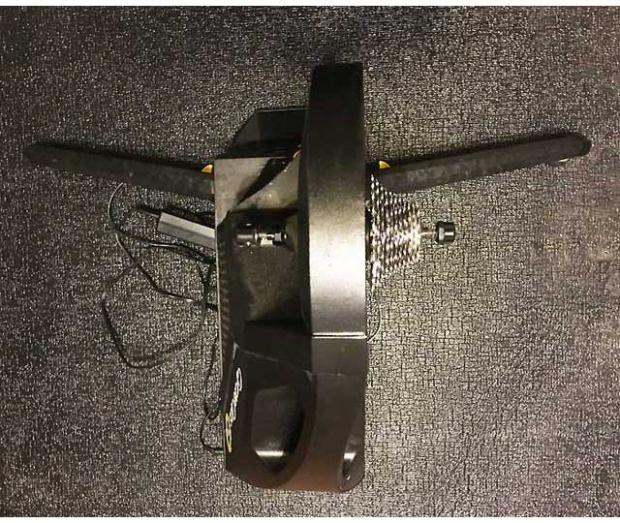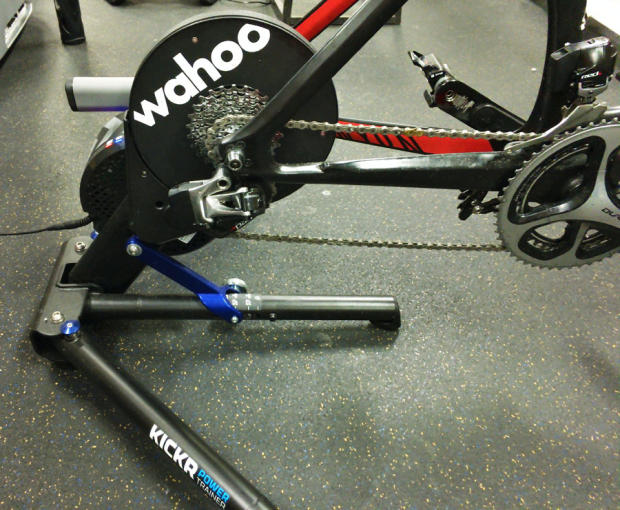Turbo Trainers and Rollers
There’s no room for dispute if you’re riding aboard a trainer: If you aren’t training smart, you’re training dumb. But there are times when dumb is a virtue! (Why pay for smart, if dumb is all you need?)
Third party applications (like Zwift and Trainerroad) control the resistance on smart trainers. Traditional turbo trainers (aka dumb trainers) don’t work like that. You, the rider, need to make the bike harder or easier to pedal if you want to match the effort requirements of these third party software products. Usually (but not always!) that’s done just by changing the gears on your bike.
Some dumb trainers also have additional features such as Ant+ or BTLE transmissions and manual resistance control, but this category really focusses on the types of resistance used: wind, magnets, fluid, rollers.
Types of Turbo Trainers
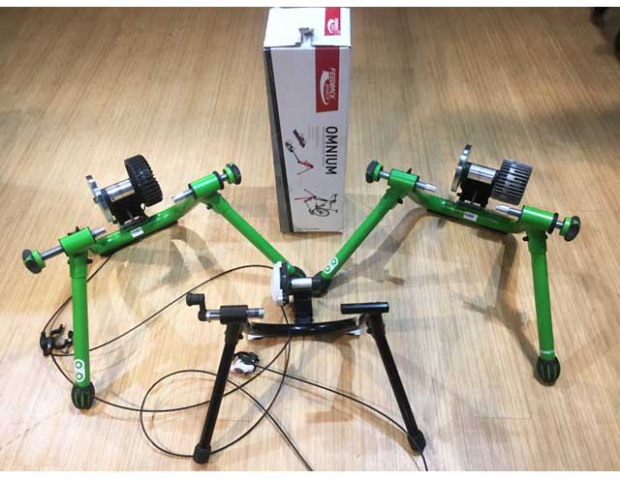
Within the turbo trainer category, there are different types of turbo trainers, each with advantages. The trade-offs are price, sound, maximum wattages, and feel.
Now, before we go further, remember, there are a couple of ways to make your dumb trainer compatible with these new, cool, smart and relatively inexpensive software platforms. One is for your bike to be equipped with methods of measuring the requisite metrics (power, speed, cadence). Lacking these, there is a very inexpensive method described in our first primer on Zwift. An Ant+ dongle, a Wahoo Speed and Cadence sensor, and you’re up and running for under $100 (not counting the cost of your dumb trainer). I’ll finish this up with a little more on the specifics of this (Virtual Power), but let’s just get right into trainers.
Wind/Air
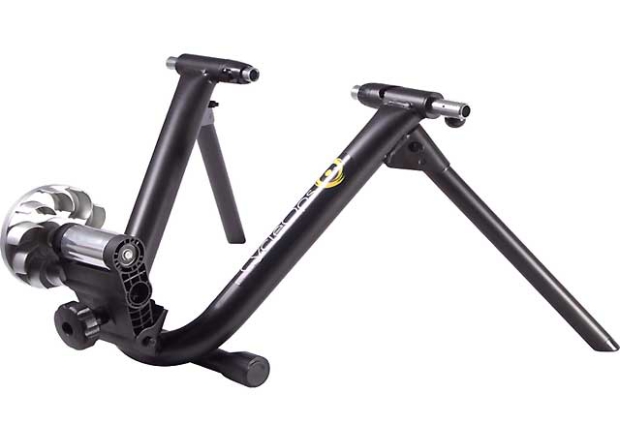
An air, or wind, resistance turbo trainer relies on an external fan within a flywheel that utilizes air to provide the resistance. The harder one pedals, the greater the resistance, and the greater the noise! These trainers are deficient in road feel but do allow riders to hit higher wattages than some other dumb trainers. Air or wind resistance trainers are often considered an entry level trainer with costs starting at $100. The CycleOps Wind Trainer ($169) is one of the most popular in this category and is compatible with many of the various virtual training apps.
Magnetic
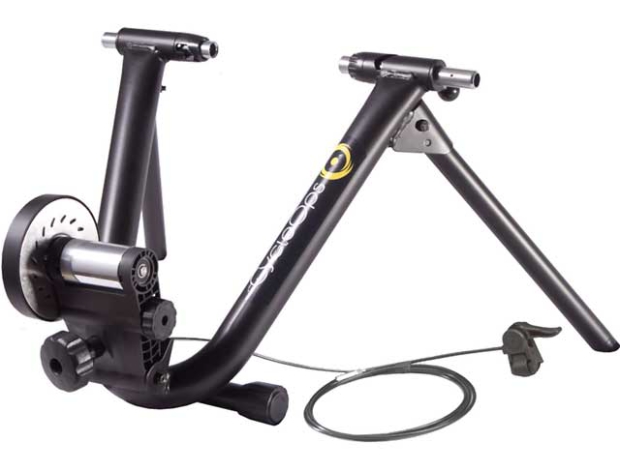
Magnetic turbo trainers are the mid-level dumb trainer and work in a similar fashion to air resistance trainers however the flywheel relies on magnets within the unit to create a magnetic field of resistance as opposed to air resistance. The resistance provided by magnetic trainers is linear when compared to speed, that is the resistance gets progressively harder.
Smart Trainers that rely on this type of resistance use an electric current to create an electromagnetic field of resistance. Unlike smart trainers, the resistance level for magnetic trainers often is limited to the range of 700-1000 Watts and must be controlled manually via a lever that can attach to the handlebars.
Magnetic trainers provide improved resistance, are quieter, and offer better road feel versus wind trainers, with only a slight increase in price ($200+), making them a popular choice as long as the max wattage is not a deciding factor.
This category has been relatively stagnant in terms of development until recently with the release of the STAC Zero (below).
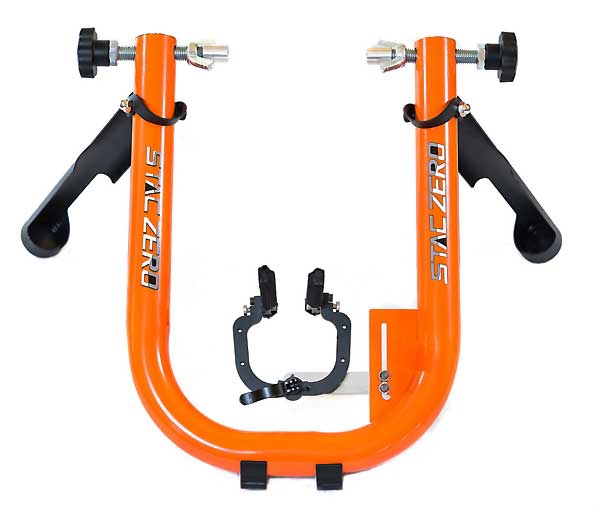
This trainer relies on magnets attached to the rear wheel that interact with the trainer to create an eddy current (magnetic resistance) which allows for greater resistance than traditional turbo trainers. STAC claims that riders can generate up to 2000 watts under certain conditions. Also, because there is no flywheel and the bike’s tire doesn’t touch the trainer, the only sound heard is from the bike’s drivetrain, hence the name STAC Zero for zero sound. There are two models of the STAC Zero – Basic and Power meter – with the pricing starting at $439 Canadian. Slowtwitch plans to do some hands-on testing in the near future with the Stac Zero.
Fluid
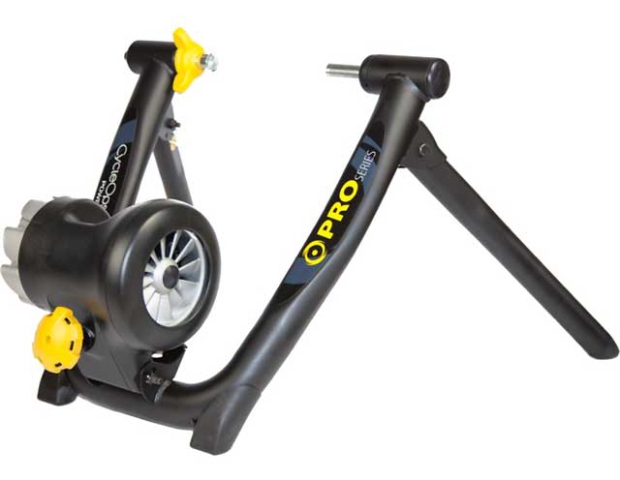
Fluid trainers may be the most popular trainer type on the market. These have a more realistic feel than wind and magnetic trainers, they are quieter, and allow riders to produce more power. Like air and magnetic resistance trainers they operate via a flywheel but use fluid within the self-contained flywheel as the means of creating resistance. The resistance is more gradual and lifelike.
Early models tended to suffer from fluid leaks but this is now the exception. They are prone to generating a great deal of heat, which can make the flywheel a bit of a hazard if you have young children. With pricing starting around $350, fluid trainers are a popular choice among indoor riders not using smart trainers. The CycleOps Fluid2 ($350+) is one of the more popular trainers in this this category.
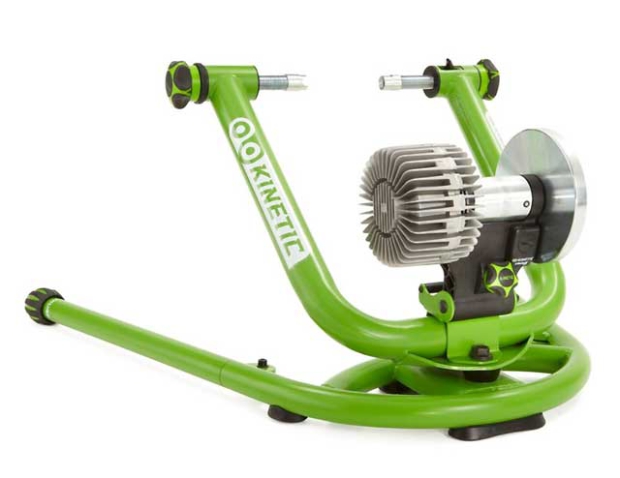
Within the fluid trainers, there is one model that is unique, the Kurt Kinetic Rock and Roll ($449 to $549). This model sits on a pivot that allows the bike frame to tilt left to right while pedaling to create a bit more realism, and possibly less stress on the frame. It is a nice feature that is really noticeable during brief, hard efforts, or anytime you get out of the saddle.
Also, the Kurt Kinetic range of trainers allow for the addition of a smart control power unit which is their response to the growth of the smart trainer market. The Rock and Roll Smart has its own built-in sensors, which preclude the need to buy the sensors mentioned above and are fully compliant with Zwift, Trainerroad and the other apps you’ll want to use.
Rollers
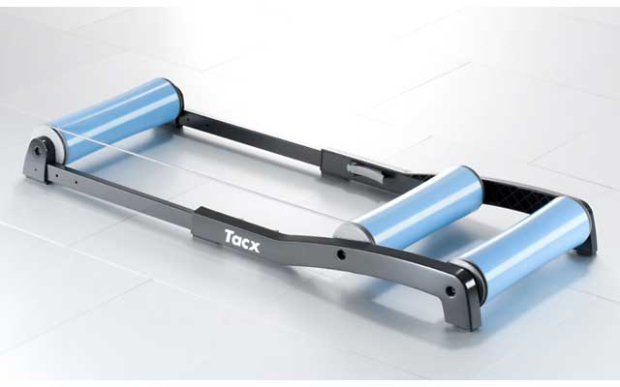
Among triathletes, rollers appear to be the least common type of indoor trainer used but among pure cyclists, rollers are quite popular. Rollers consists of either metal or plastic drums and some rails to keep the rollers in place. Simple design, simple concept, pedal or fall over as the bike is not secured to the rollers as is the case with all the other types of indoor trainers. Rollers have a number of advantages over traditional trainers such as improving balance and core strength, pedaling technique and they best simulate outdoor riding. Rollers also tend to be quiet, inexpensive, and are easily stowed away under a bed or in a closet. Most of the well-known bike trainer companies such as Tacx, CycleOps, Kurt Kinetic produce rollers at a retail cost starting at around $300.
Slowtwitch has written just about rollers in the past, and there are plenty of threads on our reader forum about rollers including one just this past week. Note one obvious reason rollers are less popular among triathletes than roadies: It’s harder to ride the rollers in the aero position than it is to ride rollers only on a road bike.
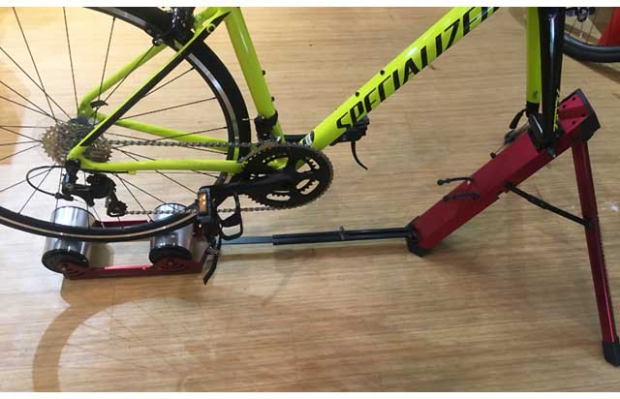
Some brands provide more features, such as smart rollers. One such example is the Omnium Trainer which is a basic roller with a front fork that acts like training-wheels for riders new to rollers. Other brands such as Tacx offer similar options. Here’s a recent discussion of this trainer on our reader forum.
What is Virtual Power
As noted above, most training platforms will accept a good guess of the power you generate while riding a dumb trainer or rollers. This opens the door to many of the benefits of virtual training without the resistance control features found in smart trainers.
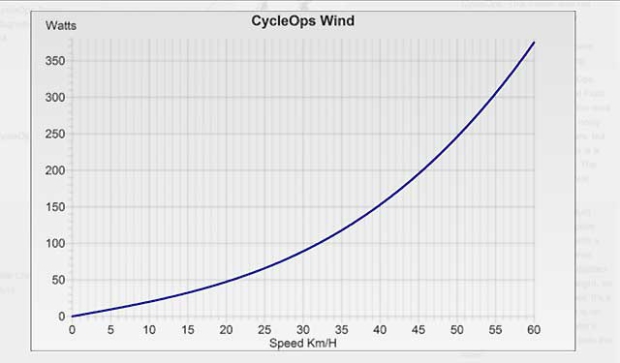
Virtual Power is a cost-efficient means of training with power, without owning a power meter or a smart trainer. A trainer’s resistance can be linear (resistance changes proportional to speed), or the most road-like feel being progressive (resistance changes as one changes gears or pedals harder). Based on the trainer’s known power curve, which is basically the power (watts) to maintain a certain speed, and the speed reading from the rear tire or flywheel on a trainer, a power value (virtual power) can be calculated based on this relationship. It is important to note that each turbo trainer has its own specific power curve. Here is an example of the power curves for turbo trainers.
Dumb Trainers and Virtual Training
Just because you don’t have a smart trainer does not mean you cannot use some of the virtual training and racing platforms on the market. Some of the virtual training platforms will function using virtual power, minus the resistance control feature.
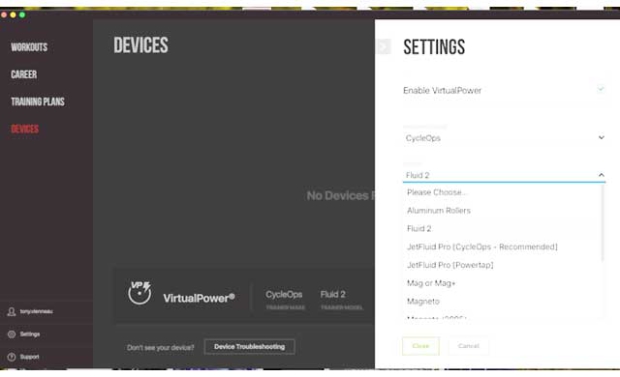
For example, Zwift only requires a speed sensor on your rear wheel and a supported trainer which Zwift can use its power curve to establish virtual power (or zPower in Zwift). To use virtual power with Zwift, pair a speed sensor and “classic trainer” and Zwift will calculate a virtual power for the ride. (Described in vivid detail on our intro-to-Zwift series, installment-1.)
TrainerRoad has a similar process. Under the device screen in TrainerRoad, simply “Enable Virtual Power” and then pair your bike trainer from the drop-down menu and then pair a speed and cadence sensor. TrainerRoad has a nice description on setting up virtual power with its software.
Each virtual training platform offers tips and compatible trainers on their website for training with virtual power so I recommend following their directions when using their software platforms.


